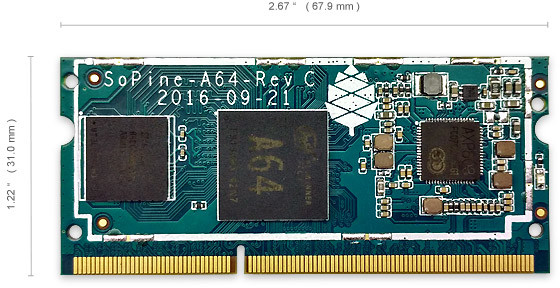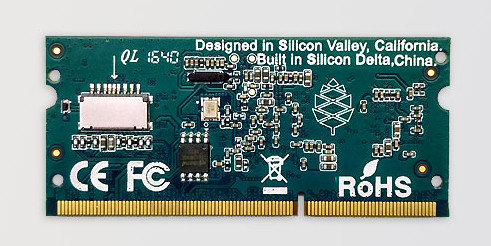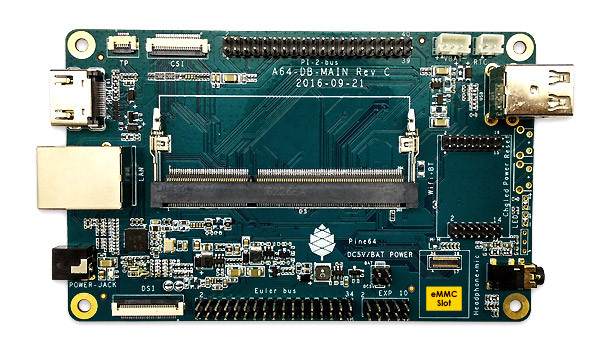Following yesterday’s Raspberry Pi Compute Module 3 launch, we have a new development board turned into system-on-module (SoM) today with PINE64 launching SOPINE A64 SO-DIMM module based on Allwinner A64 processor with 2GB RAM together with SOPINE “Model A” baseboard.
 SOPINE A64 CPU module specifications:
SOPINE A64 CPU module specifications:
- SoC – Allwinner A64 quad core Cortex A53 processor @ 1.2 GHz with Mali-400MP2 GPU
- System Memory – 2GB LPDDR3
- Storage – 128 Mbit SPI flash, micro SD slot (on the back)
- I/Os via 204-pin SO-DIMM edge connector
- Video Output / Display – HDMI + CEC, MIPI DSI
- Audio – I2S, HP, headphone, microphone
- 2x USB
- 1x Gigabit Ethernet (RGMII)
- UART, I2C, PWM, GPIOs, etc…
- Power Supply – AXP803 PMIC
- Dimensions – 67.9 x 31.0 mm (DDR3 SO-DIMM form factor)
 SOPINE A64 will basically run the same firmware as used for PINE A64+ development board, except for some modifications for LPDDR3 RAM support. Support operating systems should include Android, Ubuntu, and other Linux distributions. In order to get started while you design your own baseboard for the module or if you simply want to evaluate the solution, the company also released SOPINE “Model A” baseboard.
SOPINE A64 will basically run the same firmware as used for PINE A64+ development board, except for some modifications for LPDDR3 RAM support. Support operating systems should include Android, Ubuntu, and other Linux distributions. In order to get started while you design your own baseboard for the module or if you simply want to evaluate the solution, the company also released SOPINE “Model A” baseboard.
 The baseboard has the same layout as PINE A64/A64+ boards and roughly exposed the same ports for some extra like an eMMC slot:
The baseboard has the same layout as PINE A64/A64+ boards and roughly exposed the same ports for some extra like an eMMC slot:
- SoM Connector – 204-pin SO-DIMM slot
- External Storage – Optional eMMC module
- Video Output / Display I/F – HDMI, MIPI DSI + Touch Panel connector
- Audio – HDMI, 3.5mm headphone jack
- Camera – 1x MIPI CSI connector
- Connectivity – Gigabit Ethernet, header for WiFi & Bluetooth module
- USB – 2x USB 2.0 ports
- Expansion – Pi-2-Bus, Euler bus, and EXP 10 headers
- Misc – RTC header
- Power Supply – 5V via power barrel, or 3-pin battery header
SOPINE A64 module and baseboard will be available next month after Chinese New Year, and sell for $29, while SOPINE Model A baseboard will go for $14.99, and a complete kit with the SOM and baseboard for just $34.99.
You’ll find more details on SOPINE A64 product page including schematics, and some development tools.

Jean-Luc started CNX Software in 2010 as a part-time endeavor, before quitting his job as a software engineering manager, and starting to write daily news, and reviews full time later in 2011.
Support CNX Software! Donate via cryptocurrencies, become a Patron on Patreon, or purchase goods on Amazon or Aliexpress. We also use affiliate links in articles to earn commissions if you make a purchase after clicking on those links.




